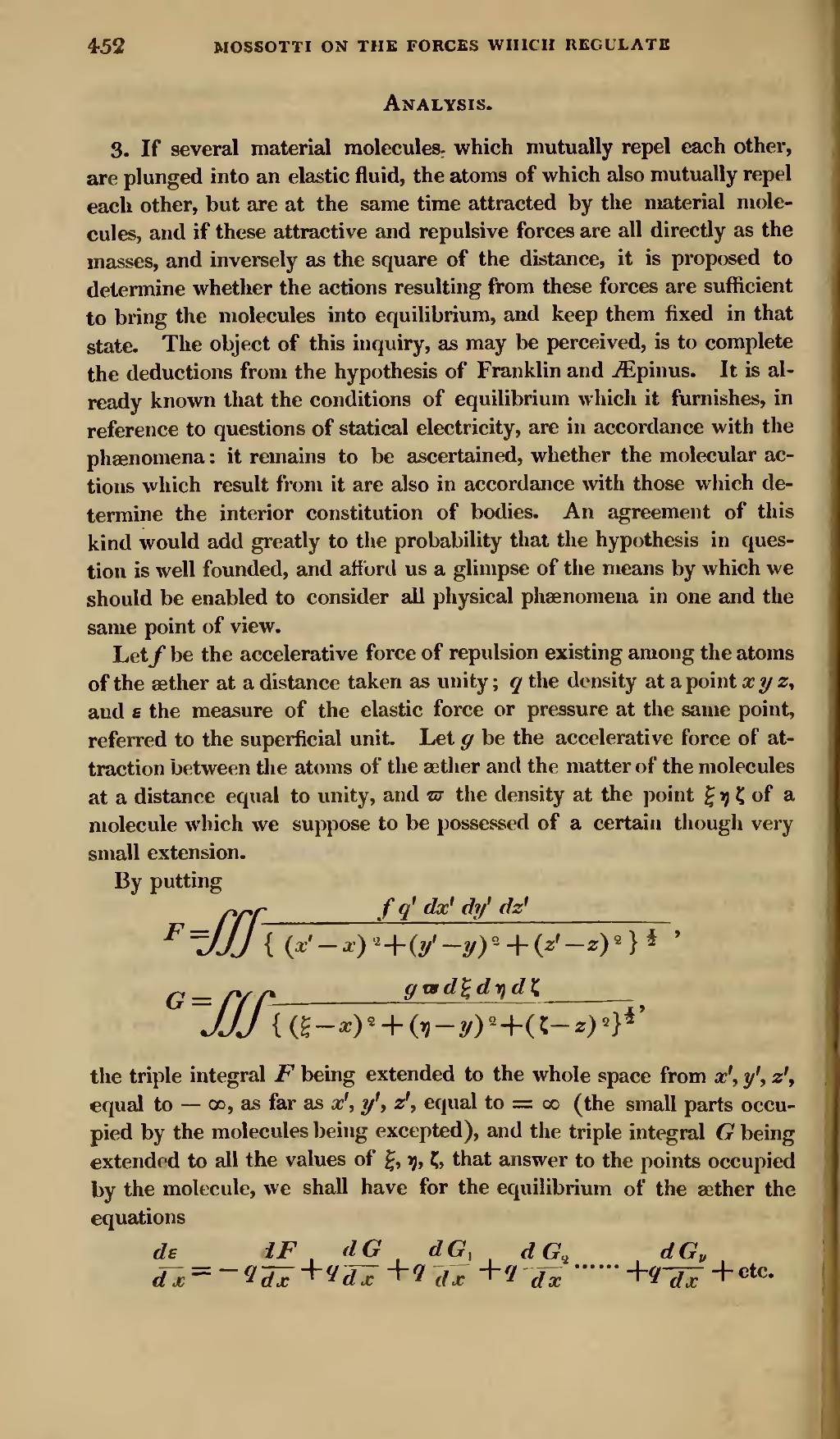Analysis.
3. If several material molecules, which mutually repel each other, are plunged into an elastic fluid, the atoms of which also mutually repel each other, but are at the same time attracted by the material molecules, and if these attractive and repulsive forces are all directly as the masses, and inversely as the square of the distance, it is proposed to determine whether the actions resulting from these forces are sufficient to bring the molecules into equilibrium, and keep them fixed in that state. The object of this inquiry, as may be perceived, is to complete the deductions from the hypothesis of Franklin and Æpinus. It is already known that the conditions of equilibrium which it furnishes, in reference to questions of statical electricity, are in accordance with the phænomena: it remains to be ascertained, whether the molecular actions which result from it are also in accordance with those which determine the interior constitution of bodies. An agreement of this kind would add greatly to the probability that the hypothesis in question is well founded, and afford us a glimpse of the means by which we should be enabled to consider all physical phænomena in one and the same point of view.
Let be the accelerative force of repulsion existing among the atoms of the æther at a distance taken as unity; the density at a point , and the measure of the elastic force or pressure at the same point, referred to the superficial unit. Let be the accelerative force of attraction between the atoms of the æther and the matter of the molecules at a distance equal to unity, and the density at the point of a molecule which we suppose to be possessed of a certain though very small extension.
By putting
the triple integral being extended to the whole space from , , , equal to , as far as , , , equal to (the small parts occupied by the molecules being excepted), and the triple integral being extended to all the values of , , , that answer to the points occupied by the molecule, we shall have for the equilibrium of the æther the equations




















